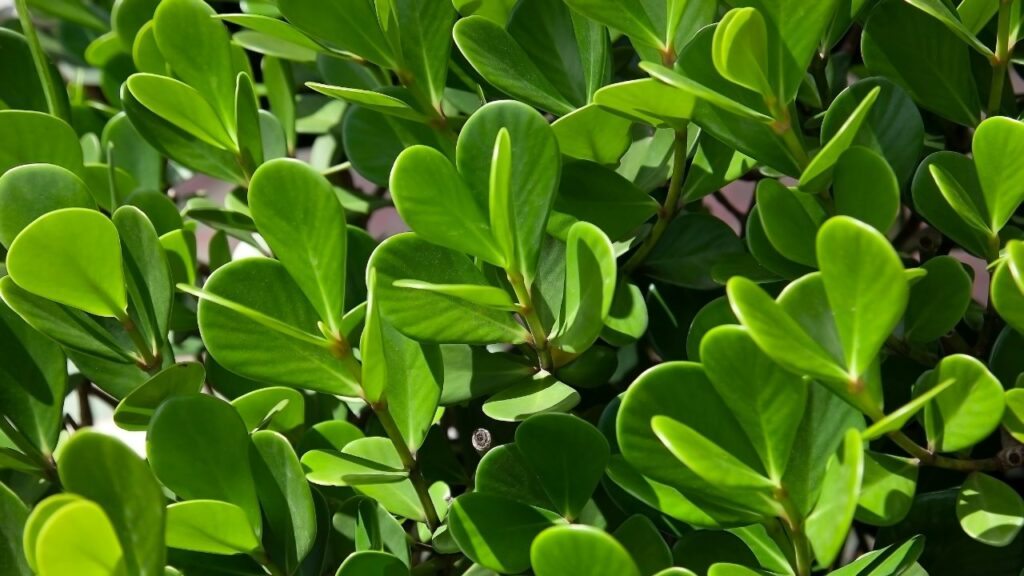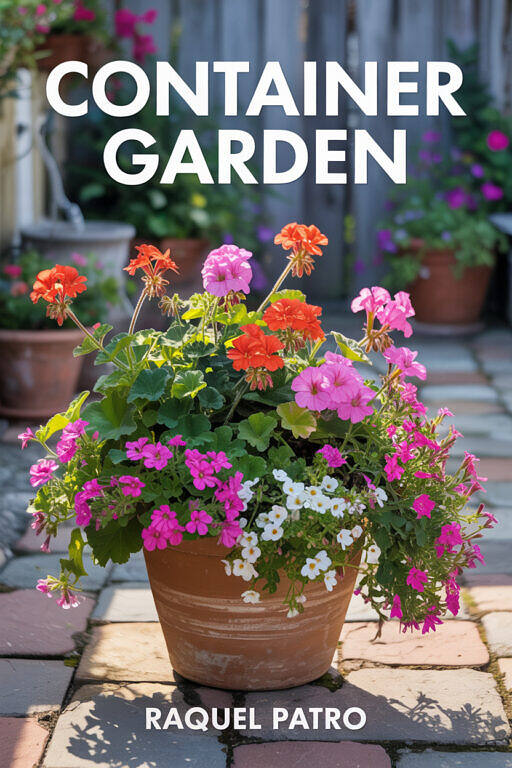The Clusia (Clusia fluminensis), also known as Autograph Tree, is a dioecious shrub species with dense, evergreen, and glossy foliage. It is well known for its resilience to adverse conditions, such as salinity and strong winds, making it widely used in landscaping across tropical areas. Native to Brazil, it is predominantly found in the coastal regions of the states of Rio de Janeiro and São Paulo, particularly adapting to restinga ecosystems, which are characterized by sandy soils and high sun exposure.
Like other species in the same genus, Clusia is known for its remarkable ability to withstand harsh conditions, mainly due to its capacity to perform both C3 and CAM (Crassulacean Acid Metabolism) photosynthesis. These special mechanisms optimize the plant’s photosynthesis under intense heat, reducing dehydration.
This flexibility allows the plant to efficiently use water and CO₂ according to environmental conditions. In well-watered environments, C3 photosynthesis predominates. However, under water stress or high salinity, the plant can switch to CAM metabolism, which is characterized by nighttime stomatal opening for CO₂ fixation, thereby minimizing water loss during the day. This adaptation is particularly advantageous in restinga habitats, where water availability is limited, and environmental conditions can be extreme.

The genus name “Clusia” honors the French botanist Carolus Clusius, recognized for his contributions to botany in the 16th century. Meanwhile, the specific epithet “fluminensis” refers to Rio de Janeiro, indicating the region where the species was first identified and is native to.
Clusia has a robust taproot system along with adventitious roots that grow from the branches and become prop roots upon reaching the soil. Its stem is upright and highly branched, contributing to its naturally dense growth. It can grow as either a shrub or a small tree, reaching up to 6 meters (20 feet) in height if left unpruned. The leaves are opposite, petiolate, and range in shape from obovate to elliptical, measuring between 5 to 12 cm (2 to 4.7 inches) in length and 3 to 6 cm (1.2 to 2.4 inches) in width. Their texture varies from fleshy to leathery, with a dark green color and a glossy surface. A distinctive feature is the presence of glands on the leaf blade, which secrete latex—a milky substance that serves as a defense against herbivores, pests, and diseases.
Flowering mainly occurs in spring and summer when the flowers attract pollinators such as stingless bees. The inflorescences of Clusia fluminensis are thyrsoid (raceme of cymes), usually terminal, containing 2 to 6 unisexual flowers. Though they have limited ornamental value, the flowers are small and range from white to slightly pink. As a dioecious species, it has separate male and female plants.

Male flowers have numerous stamens, whereas female flowers feature distinct carpels. The petals are white, contrasting with the orange-colored stamens or carpels. The fruit is an ellipsoid capsule that splits open when ripe, releasing seeds encased in an orange aril, which attracts birds that aid in seed dispersal.
In addition to the standard species, notable varieties include the Variegata variety and the ‘Pedra Azul’ cultivar. The Variegata variety features leaves with creamy or yellow margins and spots, creating an appealing ornamental effect, especially in landscaping projects that seek color contrast. The ‘Pedra Azul’ cultivar, also known as Dwarf Clusia or Dwarf Autograph Tree, is characterized by smaller leaves and a compact growth habit, making it a more delicate-looking plant. This variety is highly sought after by landscapers who want to combine the species’ ruggedness with the refined aesthetic of formal shrubs like boxwood. For the same reason, it is also valued for bonsai art.
Thanks to its dense and glossy foliage, Clusia fluminensis is frequently used for hedges, providing privacy and serving as a barrier against wind and pollution. Its fast growth and tolerance to pruning make it one of the most popular species for replacing traditional hedge plants such as hibiscus and mock orange. For similar reasons, it is also used for edging pathways or lining walls, requiring less maintenance compared to other species.

Beyond its use in hedges, Clusia fluminensis is also recommended as a standalone shrub or for container cultivation, making it an excellent choice for balconies, terraces, and indoor spaces that receive sunlight from windows, skylights, or patio doors. Its resistance to salinity makes it ideal for coastal gardens, where other ornamental species may struggle due to excessive salt in the soil and air.
Another distinctive feature of Clusia is its positive response to pruning, allowing for the creation of topiaries and plant sculptures. This characteristic enables both formal and informal aesthetics, enhancing its ornamental potential and making it a versatile choice for residential projects as well as large public spaces such as parks and corporate gardens. With its unique beauty, resilience, and low maintenance, Clusia fluminensis is one of the most valued species in contemporary landscaping, bringing elegance and practicality to various spaces.
An interesting aspect of this species is its ability to absorb atmospheric pollutants, making it an ally in urban air biofiltration projects. Its root system also contributes to the stabilization of sandy soils, making it particularly relevant in the restoration of degraded areas, especially in coastal environments.

Clusia prefers full sun environments, although it tolerates partial shade as long as it receives at least four hours of sunlight per day. When grown indoors or on balconies with limited light, the plant may exhibit slower growth, a less dense appearance, and a reduction in its characteristic glossy foliage.
It adapts well to tropical and subtropical regions, being capable of withstanding high temperatures and moderate humidity. Its resistance to strong winds and salinity makes it an excellent choice for coastal gardens. In colder climates, it may suffer from severe frost and requires protection or container cultivation to facilitate relocation to sheltered areas during winter. In cases of light frost, the plant may remain unaffected, and even if some leaves show signs of damage, it can regenerate with a rejuvenation pruning.
The ideal soil or substrate for Clusia cultivation should be well-drained, aerated, and rich in organic matter. Despite this preference, Clusia fluminensis is capable of surviving and thriving in poor soils and coastal environments where other species struggle to adapt. It prefers slightly acidic to neutral soils but can adapt to various substrates as long as they are not overly compacted or waterlogged. Its tolerance to drought stress allows the plant to endure short dry periods, making it ideal for low-maintenance landscaping projects.

Watering should be done moderately, avoiding both complete soil dryness and excessive moisture. During hotter periods, watering every two to three days is recommended, always monitoring the substrate’s moisture levels. In rainy periods, irrigation can be reduced or suspended. Clusia responds well to regular fertilization, which promotes more vigorous growth.
When planting in soil, it is recommended to apply organic matter, such as worm humus or well-composted cattle manure, every three months. For container cultivation, a balanced fertilizer (10-10-10 or similar), preferably slow-release, can be applied every two months during the active growth period. Fertilizers rich in phosphorus and potassium are recommended to strengthen roots and stimulate flowering.
The maintenance of Clusia fluminensis is relatively simple. It responds well to pruning, allowing control over its size, density, and shape, especially when used as a hedge or ornamental shrub. Pruning can be done at the end of winter or the beginning of spring to encourage new growth and rejuvenate the foliage. In general, Clusia is highly resistant to pests and diseases, which contributes to its success in landscaping.
The propagation of Clusia fluminensis can be done through cuttings, air layering, or seeds. Cuttings are the most commonly used and easiest method due to their practicality and high success rate. To propagate by cuttings, semi-hardwood stems of approximately 15 to 20 cm (6 to 8 inches) in length, with about three nodes, should be cut. The lower leaves should be removed, leaving only a few at the top. Quality tip cuttings can be collected during pruning. The cuttings can be planted directly in a sandy substrate mixed with potting soil and kept in partial shade until rooting occurs, which typically takes between 30 and 60 days.

Air layering is also an effective method, especially for mature plants. This process involves inducing root formation on a branch that is still attached to the parent plant before separating it, ensuring a well-established new specimen. Branches that are already producing adventitious roots can be used for air layering.
Growing Clusia from seeds is less common, as its initial growth is slow, and germination can be irregular. The seeds should be planted in an organic-rich substrate and kept moist until germination, which may take several weeks. Due to its ease of propagation and resilience, Clusia fluminensis remains one of the most preferred species in landscaping, offering both beauty and functionality across different environments.
Interesting Fact: Recent scientific studies suggest that Clusia fluminensis may have therapeutic properties against the effects of the venom of Jararacas (snakes of the Bothrops genus), which are responsible for most snakebite incidents in Brazil. Researchers tested extracts from the leaves, stems, and fruits of the plant and observed that they helped inhibit effects such as hemorrhages, inflammation, and muscle damage caused by the venom.

Additionally, a gel made from fruit extracts has been found to be effective in reducing bleeding. It is believed that this effect is linked to the presence of compounds such as flavonoids and tannins, which are known for their anti-inflammatory and anticoagulant properties. While these findings are promising, further research is needed to better understand how Clusia could be used as a complement to conventional antivenom treatment.


